These plates are used on limousines, for-hire cars, and light buses licensed to operate interstate as livery vehicles.
I am not sure when this type started – I believe the mid- to- late 1930s- although originally Interstate plates were also issued to commercial trucks operating interstate.
In the 1940s and 1950s, similar to Bus plates there existed a “General Dist. Interstate” type – colors were the same as regular Interstate plates but had a single letter prefix before a 2-digit distinguishing number. An operator would receive plates with the same distinguishing number, while the letter prefix changed for each plate issued (e.g. A 30, B 30, C 30, etc.).
Around 1992, the format changed from all-numeric to one having a ‘Z’ prefix and suffix – similar to Livery (L) and Taxi (T) plates. The present configuration is Z1234Z. Around 2012, after reaching Z9999Z, they went back to the Z2000Z series. In 2016, a 7-digit format was started presumably at Z00000Z.
Click the image above to see this type in use.
 1941
1941
The design of this plate is similar to Common Carrier plates of this era. It appears that after plate number 9999 they rolled over to an ‘A’123 format.
 1967
1967
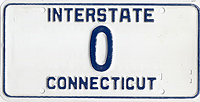 ca. Late 1960s Prototype/Sample
ca. Late 1960s Prototype/Sample
 1967
1967
Colors were changed to blue on white in 1967.
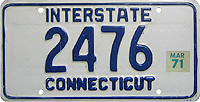 1971
1971
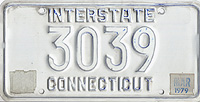 1979
1979
Like many bus plates, frequent washings took off most of the blue paint after a while.
 1986
1986
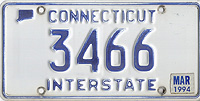 Revalidated to 1994
Revalidated to 1994
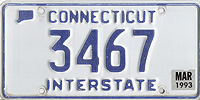 1993
1993
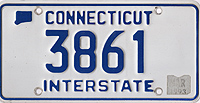 Another 1993
Another 1993
The numbering cutoff for the start of the ‘Z’ series isn’t clear – there are overlapping numbers between the two styles.
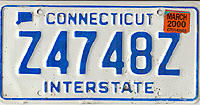 2004
2004
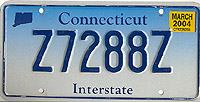 2004
2004
 2005
2005
The use of date stickers was discontinued with the 2008 expirations.
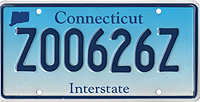 A 7-digit format was introduced in 2016.
A 7-digit format was introduced in 2016.
